Breast reduction surgery, also known as reduction mammoplasty, is a procedure designed to reshape and reduce breast size by removing excess fat, tissue, and skin. This surgery enhances the overall aesthetic appearance of the breasts. However, the recovery journey and results can continue to evolve over time, even 2 years after breast reduction surgery. Having a clear understanding of what to expect during this period is crucial for anyone considering or who has undergone breast reduction.
Dr. Viral Desai, a highly regarded cosmetic and plastic surgeon in Mumbai, emphasizes, “The two-year post-operative period often reveals the final results of breast reduction surgery. By this time, most swelling has subsided, scars have matured, and patients generally feel more confident in their appearance.”
Are you curious about your breast reduction results? Consult with a professional to ensure you’re on the right track.
Wondering how your breasts will look years after reduction surgery? Let’s delve into it.
How Do Breasts Look 2 Years After Breast Reduction?

2 years post breast reduction, the results are generally stable and well-settled. Most patients will notice their breasts have achieved their final shape and size, with any initial swelling long gone. Breast firmness and the natural feel often improve during this period, offering a more natural appearance. However, it’s important to note that changes occur even 2 years after breast reduction.
Ageing, weight fluctuations, and hormonal shifts can all affect the breasts’ appearance, but these are typically minor. Some patients might notice slight variations in symmetry or a change in breast tissue density. Despite these potential changes, the overall satisfaction rate remains high, with many patients experiencing long-term relief from physical discomfort and a boost in self-confidence.
Worried about the appearance of breast reduction scars after 2 years? Let’s explore what you might expect.
Is It Normal to Have Scars 2 Years After Breast Reduction?
Scarring is a natural part of the healing process after any surgery, including breast reduction. Two years post-surgery, most scars should have faded significantly, blending more naturally with the surrounding skin. Patients often notice that scars transition from a red or darkened appearance to a lighter, more skin-toned colour. However, the visibility of scars can vary depending on several factors, including skin type, incision location, and adherence to post-operative care instructions.

While 2 years post breast reduction, the scars may still be visible, they are often less pronounced and may continue to fade with time. It’s essential to remember that each person’s healing journey is unique. Some individuals may experience more prominent scarring than others.
“If scarring remains a concern, it’s advisable to consult a specialist who can recommend the best approach for scar management,” advises Dr. Viral Desai, an acclaimed plastic and cosmetic surgeon in Mumbai. Proper care and recommended scar treatments can help minimize the visibility of scars.
Concerned about potential issues after breast reduction? Let’s discuss the possibilities!
Complications 2 Years After Breast Reduction
Though rare, complications can occur even 2 years after breast reduction surgery. It’s crucial to stay informed and vigilant about any unusual symptoms. Here are some possible complications:
- Changes in Nipple Sensation:
Some patients might experience a loss of sensation or, conversely, increased sensitivity in the nipples, which can persist for years after surgery.

- Breast Asymmetry:
Minor differences in the size or shape of the breasts may become more apparent over time due to natural changes in the body.
- Fat Necrosis:
This occurs when fat cells in the breast tissue die, leading to firm lumps that can be felt under the skin. While usually benign, it’s essential to have these lumps evaluated by a professional.
- Delayed Wound Healing:
Although uncommon, some patients may experience delayed healing of incisions, leading to more noticeable scarring or other complications.
Experiencing complications post-breast reduction surgery? Consult with a specialist to address your concerns and discuss potential treatment options.
Thinking about how to avoid complications? Let’s look at preventive measures.
Preventive Measures to Reduce Complications
Preventing complications after breast reduction surgery requires careful attention to post-operative care and lifestyle adjustments. Here are some key measures:
- Follow-Up Appointments:
Regular follow-ups with your specialist are crucial to monitoring healing progress and addressing any emerging issues promptly.

- Scar Care:
Implementing effective scar management techniques, such as silicone sheets or creams, can significantly reduce scar visibility.
- Healthy Lifestyle:
Maintaining a stable weight, eating a balanced diet, and staying hydrated can support overall healing and reduce the risk of complications.
- Avoid Smoking:
Smoking can impair healing and increase the likelihood of complications. It’s advisable to quit smoking before and after surgery.
- Breast Self-Exams:
Regularly examining your breasts can help you detect any unusual changes or lumps early, allowing for prompt intervention if necessary.
Taking these steps can significantly reduce the risk of complications and help ensure the best possible outcome after your breast reduction surgery.
Unsure when to consult your surgeon? Let’s find out when it’s essential!
When to Consult Your Surgeon
It’s important to recognize when to seek professional advice after breast reduction surgery. Here are some scenarios where reaching out to a professional is necessary:
- Persistent Pain:
If you experience ongoing pain 2 months after breast reduction surgery, it could indicate an underlying issue that needs attention.

- Unusual Lumps:
Any new or unusual lumps in the breast area should be evaluated to rule out complications such as fat necrosis or other conditions.
- Changes in Breast Appearance:
Significant changes in breast shape, size, or symmetry that occur well after the surgery should be discussed with your surgeon.
- Nipple Discharge:
Unexplained nipple discharge, particularly if it is bloody or occurs spontaneously, requires immediate medical evaluation.
- Skin Changes:
Redness, warmth, or other skin changes around the surgical site may indicate an infection or other complication.
Regular check-ups are essential to ensure your recovery progresses as expected, and any potential issues are addressed early on.
Conclusion
2 years after breast reduction, most patients are satisfied with their results, experiencing relief from physical discomfort and a more proportionate breast size. While the journey involves some degree of scarring and potential complications, these can often be managed with the proper care and guidance.
Dr. Viral Desai, one of the most preferred experts for breast reduction in Mumbai, provides exceptional care and support throughout the post-operative journey, ensuring patients achieve long-lasting satisfaction.
Are you noticing changes after surgery? Reach out to an expert for a thorough evaluation.
Frequently Asked Questions:
Can breast grow back after reduction?
Breast tissue typically does not regrow. However, significant weight gain or hormonal changes can cause some increase in size.
How long is a breast reduction recovery?
Initial recovery takes about 2-4 weeks, but complete healing and settling of results can take up to a year or more.
How long do the results of a breast reduction last?
The results are typically long-lasting. However, ageing, weight changes, and pregnancy can affect breast size and shape over time.
Will I lose nipple sensation after breast reduction?
Some changes in nipple sensation are common. However, most patients regain normal sensation over time.
What is the best way to maintain breast shape after reduction?
Maintaining a stable weight, following a healthy lifestyle and wearing supportive bras help sustain breast reduction results.
Disclaimer: This page is intended for informational purposes and is not meant solely to promote or market any specific individual or clinic.


